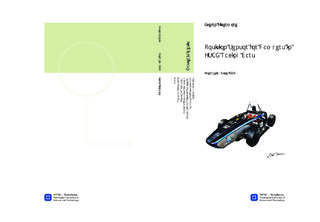| dc.description.abstract | EMATs are increasingly applied for NDT purposes in harsh environments because of their high resistance to temperature changes and shocks when compared with traditional piezoelectric transducers which require couplants. Their most significant drawback is their low SNR, which increases the difficulty of design of matching networks, signal coils and choice of magnet size and type. A study of the use of an EMAT configuration developed by Techni AS applied to FSAE dampers is reported here. The dispersion characteristic for Rayleigh surface waves and previous articles on the propagation of horizontal polarized shear waves show that Rayleigh waves are most interesting for this application. There is no dispersion associated with Rayleigh surface waves, but additional vertically polarized waves may be excited with the EMAT configuration. A simple method of cross correlation to identify the signal from the noise has been outlined and may be implemented using an FPGA. The existing damper sensors use high-resistivity thin-films to monitor the movement of dampers. EMAT offer a lower cost alternative which may match the resolution required. However, mounting on small dampers is quite difficult, and changes in the racing car design during the thesis made it difficult to find a working solution. A positioning where the sensor works as both the bumpstop and a sensor is presented, and suggestions for improving the SNR with ferrite or MFC back-planes are introduced. | nb_NO |

